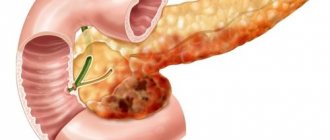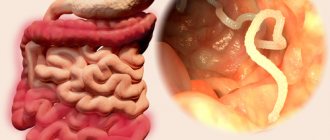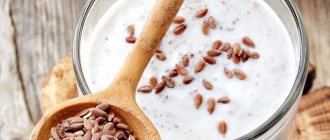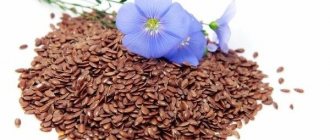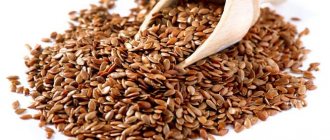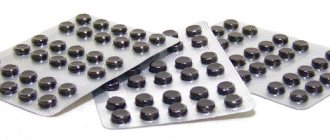How to use
Flax seeds can be consumed in a wide variety of variations. You can simply brew them and drink a thick, jelly-like decoction. You can prepare a wide variety of dishes that contain flax.
- For example, lovers of fermented milk products will certainly appreciate flax with kefir. To do this, pour a tablespoon of flax into a glass of kefir and drink it on an empty stomach.
- In addition, flaxseed can be used to make infusions, jelly, flour and much more.
- To prepare jelly, simply pour a tablespoon of seeds into half a liter of water and leave for eight hours. After this, the liquid will become thick and viscous.
- Baking lovers can make delicious cookies with flax seeds ground into flour. Almost any recipe that does not contain ingredients prohibited for esophagitis is suitable for this.
Before or after meals
It is recommended to drink infusions and decoctions of flax seeds half an hour before meals. During the time that passes before eating, all the beneficial substances will have time to reach their destination and begin to have a healing effect.
If after taking flax you have a persistent taste in your mouth that makes you unable to eat, you can take the folk remedy two hours after eating. However, it should be noted that in this case the effect of treatment may be reduced, since the motor function of the stomach after eating will be somewhat weakened.
For some people, flaxseed jelly can replace breakfast, lunch or dinner, but it is not advisable to introduce it yourself as one of your meals: you should first consult with your doctor.
Types of disease
- Catarrhal esophagitis. It develops as a result of the passage of irritating substances through the esophagus, for example, excessively hot, spicy, acidic drinks or rough foods, foods with a high content of iodine, alkalis. The cause of the disease may be smoking. This type of disease also occurs due to physiological abnormalities, due to which hydrochloric acid enters the esophagus (improperly located internal organs put pressure on the stomach, displacing its contents upward).
- Hydropic. This is the next stage of the catarrhal form of the disease. As a result of swelling, the lumen of the esophagus narrows, and the patient experiences difficulty eating and swallowing. In turn, this further increases inflammation.
- Ulcerative (erosive). Ulcers and erosive zones form on the surface of the esophageal mucosa. In severe cases, bleeding develops and pus is released. Possible rupture of the walls of the esophagus. Most often, erosive esophagitis occurs due to infection or contact with aggressive substances.
- The hemorrhagic form of the disease develops upon contact with viruses and bacteria. It is dangerous because there is a possibility of peeling off parts of the mucous membrane. This process is accompanied by severe bleeding, the patient may vomit blood. Due to exposure to infections, a pseudomembranous form of the disease can also develop, when the surface of the esophagus is covered with fibrous exudate. With improper therapy or lack thereof, the disease turns into a necrotic form, in which part of the mucous membrane dies, forming non-healing ulcers.
- Phlegmonous esophagitis develops due to traumatic injuries, ingestion of a foreign body, when an infection also penetrates into the wound. Suppuration poses a threat to the patient's life.
Benefits of flax seeds
Flaxseed and medicines based on it have a pronounced anti-inflammatory, enveloping, analgesic, softening, laxative and wound-healing effect.
The decomposition of cyanogenic glycoside produces hydrocyanic acid, glucose and acetone. The biological activity of linimarin is sufficient to affect various organs. It regulates secretion and intestinal motor function, but in overdose it can cause pain and excessive salivation.
The oil contained in flaxseed remarkably relieves inflammation and accelerates the process of regeneration of damaged tissues.
In addition, the positive effect of flax seeds on the human body is that they:
- Improve the functioning of the circulatory system;
- Helps get rid of excess weight;
- Improve vision;
- Strengthen immunity;
- Stabilize blood pressure;
- Reduce the risk of developing myocardial infarction;
- Remove toxins from the liver and stabilize its functioning;
- Helps quickly get rid of signs of frostbite and burns;
- Can be used as a side drug in the treatment of cancer.
Recipes
Flaxseed for reflux esophagitis can be consumed in a variety of forms. The method of preparation has practically no effect on its beneficial qualities, but the patient himself can choose the option that he likes.
Recipe 1
Grind well-dried flaxseed in a coffee grinder to obtain a very fine powder, and lightly sprinkle it over prepared dishes. The beneficial properties of this product are fully preserved with this method of use.
Recipe 2
Pour 5 tablespoons of flaxseed into an enamel container, pour boiling water over it (4 cups) and simmer at a very low simmer for an hour. Let the broth cool slightly, then strain and take a faceted glass (200 milliliters) half an hour before breakfast, lunch and dinner.
Recipe 3
Mix one part flaxseed (for example, a tablespoon) with the same amount of coriander and tansy. Mix thoroughly to obtain a homogeneous mixture. Take 3 teaspoons of the prepared raw material, pour in two glasses of boiling water, cover with a lid and let the infusion slowly cool to lukewarm. It is quite difficult to drink this product cold because of its thickness. Take 1/4 cup 20 minutes before meals. The duration of treatment is two months.
Recipe 4
Mix two tablespoons of flax seed with one spoon of chamomile flowers, place in a glass jar with a tight-fitting lid and put in a dark place. As needed, take a teaspoon of the mixture, pour boiling water (1 glass) and leave for half an hour. Then, after straining, take three tablespoons before each meal.
Recipe 5
One part of flax seeds is mixed with two parts of thyme. Brew two teaspoons of raw material with a glass of boiling water, allow to cool, filter and take a sip 15 minutes before meals.
Flax seeds for GERD in a thermos
Gastroesophageal reflux disease (abbreviated as GERD) is a disease that occurs when the motor function of the gastrointestinal tract is impaired. The reason for its occurrence is the constant reflux of stomach contents into the upper parts of the digestive tract, which can damage the mucous membrane of the esophagus and larynx. In especially severe cases, damage to the respiratory organs - trachea and bronchi - may occur.
Acute symptoms of reflux esophagitis are successfully relieved by pharmaceuticals, however, they are not suitable for everyday use. In this case, it is useful to take decoctions and infusions of medicinal plants. One of the most effective folk remedies intended for the treatment of this disease is brewed flax seeds, which, given the modern rhythm of life, are more convenient to brew in a thermos.
Place three teaspoons of flax seeds in a metal pan. Pour half a liter of boiling water over them and let them brew for ten minutes. After this, put the pan on gas, bring to a boil and simmer the broth over low heat for another fifteen minutes. After this, strain it and pour the resulting liquid into a thermos. Take this decoction five times a day, one-third of a glass. Before drinking the decoction, wait a little until it cools down, otherwise you can further damage the mucous membrane already affected by gastroesophageal reflux disease.
The decoction should be prepared in a glass thermos; a metal one will not work, as it loses heat too quickly.
Reflux esophagitis – code according to ICD-10
The International Classification of Diseases (ICD-10) is a special medical reference book that lists the indications of all currently known diseases. Doctors all over the world worked on its compilation to make their work easier. It is intended not for patients, but for doctors, however, everyone can easily find out their diagnosis by disease code.
ICD-10 is used to quickly transfer a patient from one hospital to another. This becomes possible due to the absence of the need for tests that the patient is forced to undergo before going to the hospital for treatment.
ICD-10 is also used in Russia, not only for transferring patients for treatment to foreign hospitals, but also for interregional migrations.
According to the ICD-10 classification, reflux esophagitis is described in paragraph K21.0 “Gastroesophageal reflux with esophagitis,” which refers to chapter K21 “Gastroesophageal reflux.” It, in turn, is included in most of K20-K31 “Diseases of the esophagus, stomach and duodenum”. All this is included in section K00-K93 “Diseases of the digestive organs”.
Symptoms of gastroesophageal reflux disease
A typical manifestation of GERD is chronic heartburn, which becomes more pronounced when bending over, exercising, or after overeating or drinking large amounts of liquid. It is difficult for a person suffering from reflux to get enough sleep because at night, when lying down, the release of stomach contents becomes more voluminous. This leads to worsening heartburn, as well as a predominance of sour or bitter taste in the mouth.
In severe cases, the patient may suffer from involuntary vomiting and constant nausea. If GERD occurs against the background of impaired motor function of the muscles of the digestive system, then difficulties may also arise during swallowing, because this reflex directly depends on the coherence of the muscles of the pharynx.
A prolonged period with regular releases of the contents of the stomach and duodenum leads to chest pain, which intensifies after each meal. Separately, one can highlight excessive salivation, which an inexperienced gastroenterologist will not associate with reflux. Saliva is especially produced at night, which also interferes with normal sleep, along with chest pain and heartburn.
Atypical manifestations of chronic reflux include:
- bronchitis;
- private pneumonia;
- fibrosis of lung tissue;
- chronic laryngitis;
- otitis media;
- violations of tooth enamel.
It is difficult to diagnose reflux when there is no typical clinical picture. Some patients come to the appointment with a direct complaint of heartburn, while others with the same disease make an appointment with an ENT specialist, change specialists and become disappointed in the doctor’s qualifications when he does not find the cause of a chronic irritating cough.
Contraindications
Despite the many beneficial qualities, flax seed cannot be consumed by everyone. Fortunately, the list of diseases for which this remedy is prohibited is very small and is limited to such ailments as:
- Hepatitis;
- Cholelithiasis;
- Pancreatitis.
Flaxseed should be used with caution for hyperacid gastritis. Before starting treatment, it would not hurt to consult with an experienced gastroenterologist who has a positive attitude towards traditional medicine. Flax seed is a fairly powerful remedy, which is careless and even dangerous to use for self-medication.
Like any other medicine, flaxseed should be taken under the supervision of a physician and, at the slightest sign of deterioration in health, immediately stop using it.
Treatment of esophagitis
Treatment of esophageal esophagitis begins with eliminating the underlying disease. In the presence of reflux phenomena, drugs are prescribed that reduce or suppress the production of hydrochloric acid. Diet and split meals are important in the treatment of chronic esophagitis and its other forms. Depending on the factor that provoked the disease and the condition of the mucous membrane, the following is prescribed:
- prokinetics;
- enveloping agents;
- antisecretory drugs;
- anti-inflammatory drugs;
- physiotherapy;
- endoscopic laser intervention (in case of ulcers or necrotic tissue areas).
The patient should review the diet and diet, give up irritating, sour, salty, spicy foods, smoking, alcohol, normalize weight, and stop overeating. After eating, you should be in an upright position for at least 2 hours. It is recommended to limit body bending, which can provoke reflux. If the recommendations are not followed, an exacerbation of esophagitis and the development of complications are likely.
Reviews
Dear readers, your opinion is very important to us - therefore, we will be glad to hear your feedback about flax seeds for reflux esophagitis in the comments, this will also be useful to other users of the site.
Milan, Kaliningrad
“I have been living with reflux esophagitis for four years. don’t bend over or get upset again - the disease immediately appears in all its ugliness. The doctor “calmed me down”, telling me to get used to it, this is now forever, and advised me to rebuild my life taking into account the disease. And this disgusts me. It turns out that if official medicine cannot cure it, then we need to give up? I began to look for ways to heal myself. I tried a lot, but settled on one, which was recommended to me by a doctor I knew - oddly enough, a dentist. This is flax seed. There is no need to brew or infuse it, just grind it into flour and sprinkle it on your food. I add it to all my prepared dishes. You don’t feel the taste at all, or I’m already used to it. I’ve been taking it for a month and a half and I’m already seeing results: the symptoms of the disease have become much weaker, heartburn bothers me less often and has become less painful. I hope that over time, if not completely cured, then at least regain a satisfactory quality of life.”
Arthur, Voronezh
“After extreme stress (now I’m even ashamed to remember how I suffered because of such nonsense), I started having coughing attacks. At first, the therapist considered it bronchial asthma, but six months later, when a whole bunch of diseases of the digestive system were discovered, it turned out that this was a manifestation of reflux esophagitis. Having googled what this disease is, I was horrified, and when I was sent for a biopsy, I decided that I didn’t have long left... Fortunately, oncology was not confirmed, but since then I have lost peace and sleep. The gastroenterologist with whom I am being treated advised, in addition to medications, to brew and drink flaxseed. I've been drinking for six months. I can’t say that everything has gone away, but it has become much easier.”
Trigger foods to avoid
Symptoms of GERD may appear after drinking certain drinks and foods.
Some of these dietary triggers include the following:
- fatty or spicy foods;
- all citrus fruits;
- chocolate;
- tomatoes;
- pineapples;
- garlic;
- onion;
- mint;
- tea;
- coffee;
- various carbonated drinks;
- alcohol.
Let's take a closer look at the products listed above:
- High fat foods. Regular consumption of fatty and fried foods can cause relaxation of the LES. Due to the relaxation of the valve, stomach acid begins to penetrate into the esophagus, and the process of gastric emptying slows down. Since eating fatty foods is a typical cause of reflux symptoms, limiting your daily fat intake can solve this problem.
It is worth limiting the consumption of the following types of dishes and products:
- onion rings, French fries;
- fatty dairy products (sour cream, cheese, whole milk, butter, etc.);
- fried and fatty pieces of meat;
- lard, ham and bacon fat;
- some snacks and desserts (potato chips, ice cream, etc.);
- creamy sauces and salad dressings, fatty gravies;
- any fatty and fried foods.
- Tomatoes and citrus fruits. Vegetables and fruits contain a large amount of minerals and vitamins, so they are an essential part of a healthy diet. However, some of them, primarily acidic ones, can cause symptoms of reflux esophagitis.
If you often experience heartburn, eliminate the following foods from your diet:
- lemons;
- grapefruits;
- oranges;
- pineapples;
- limes;
- tomatoes
- salsa;
- tomato sauce and products containing it (ketchup, pizza).
- Chocolate. Chocolate contains methylxanthine, a substance that relaxes the smooth muscles of the esophagus, thereby increasing reflux.
- Onions, garlic, spicy food. Many people experience heartburn symptoms after eating spicy foods, especially garlic and onions. If you notice this feature in yourself, eliminate these foods from your diet.
- Mint. Peppermint candies, chewing gum, and mint in its pure form can also trigger symptoms of GERD.
- Some other products. Some people have an individual intolerance to specific foods that usually do not cause heartburn in everyone else. This could be some dairy or flour products (bread, crackers, etc.). If you notice that you have an individual intolerance to a certain food product, try to exclude it from your menu.
[Video] Doctor Evdokimenko - how to get rid of heartburn at home:

